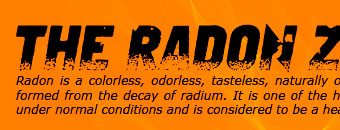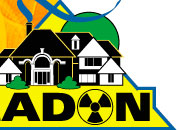 |
 |
 |
||||
|
||||||
| Call: 417-844-0942 | ||||||
|
»UV Tanning Equipment This page discusses the potential dangers due to radiation from using tanning equipment. Overview Tanning occurs when the skin produces additional pigment (coloring) to protect itself against burns from ultraviolet (UV) rays. Overexposure to these rays can cause eye injury, premature wrinkling of the skin, light-induced skin rashes, and can increase your chances of developing skin cancer. Life on Earth is protected from UV rays by the ozone layer, which forms a thin shield high in the atmosphere. In the 1980s, scientists began finding clues that the ozone layer was going away or being depleted. This allows more UV radiation to reach the Earth's surface. This can cause people to have a greater chance of getting too much UV radiation. We talk about UV radiation in terms of its wavelength, the distance between two successive peaks of a wave. UV wavelengths are measured in nanometers (nm) or one billionth of a meter. The shorter the wavelength the higher the energy. UV is divided into three bands by wavelength: UVA wavelengths (315-400 nm) have the longest wavelengths, and are only slightly affected by ozone levels. Most UVA radiation is able to reach Earth's surface and can contribute to sunburn, skin aging, eye damage, and can suppress your immune system. UVB wavelengths (280-325 nm) are strongly affected by ozone levels. Decreases in stratospheric ozone mean that more UVB radiation can reach Earth's surface, causing sunburns, snow blindness, immune system suppression, and a variety of skin problems including skin cancer and premature aging. UVC wavelengths (180-280 nm) have the shortest wavelengths, and are very strongly affected by ozone levels. Virtually all UVC radiation is absorbed by ozone, water vapor, oxygen and carbon dioxide before reaching Earth’s surface. Therefore, the UV radiation reaching Earth’s surface is largely composed of UVA with some UVB. Even with decreases in stratospheric ozone, damage from UVC radiation is very small Most sun lamps and tanning equipment emit ultraviolet radiation. This equipment mainly produces UVA radiation, sometimes known as “tanning rays.” While UVA radiation from artificial-tanning equipment is less likely to cause sunburn than UVB radiation from sunlight, that does not make UVA radiation safe. UVA rays have a suspected link to malignant melanoma, and, like UVB rays, they also may be linked to immune system damage. Long-term exposure to natural or artificial sources of ultraviolet rays increases the risk of developing skin cancer. Women who use tanning beds more than once a month are 55 percent more likely to develop malignant melanoma, the most fatal form of skin cancer. In addition, exposure to ultraviolet light actually thins the skin, making it less able to heal and increasing the damage caused by sunlight. |
|
|||||